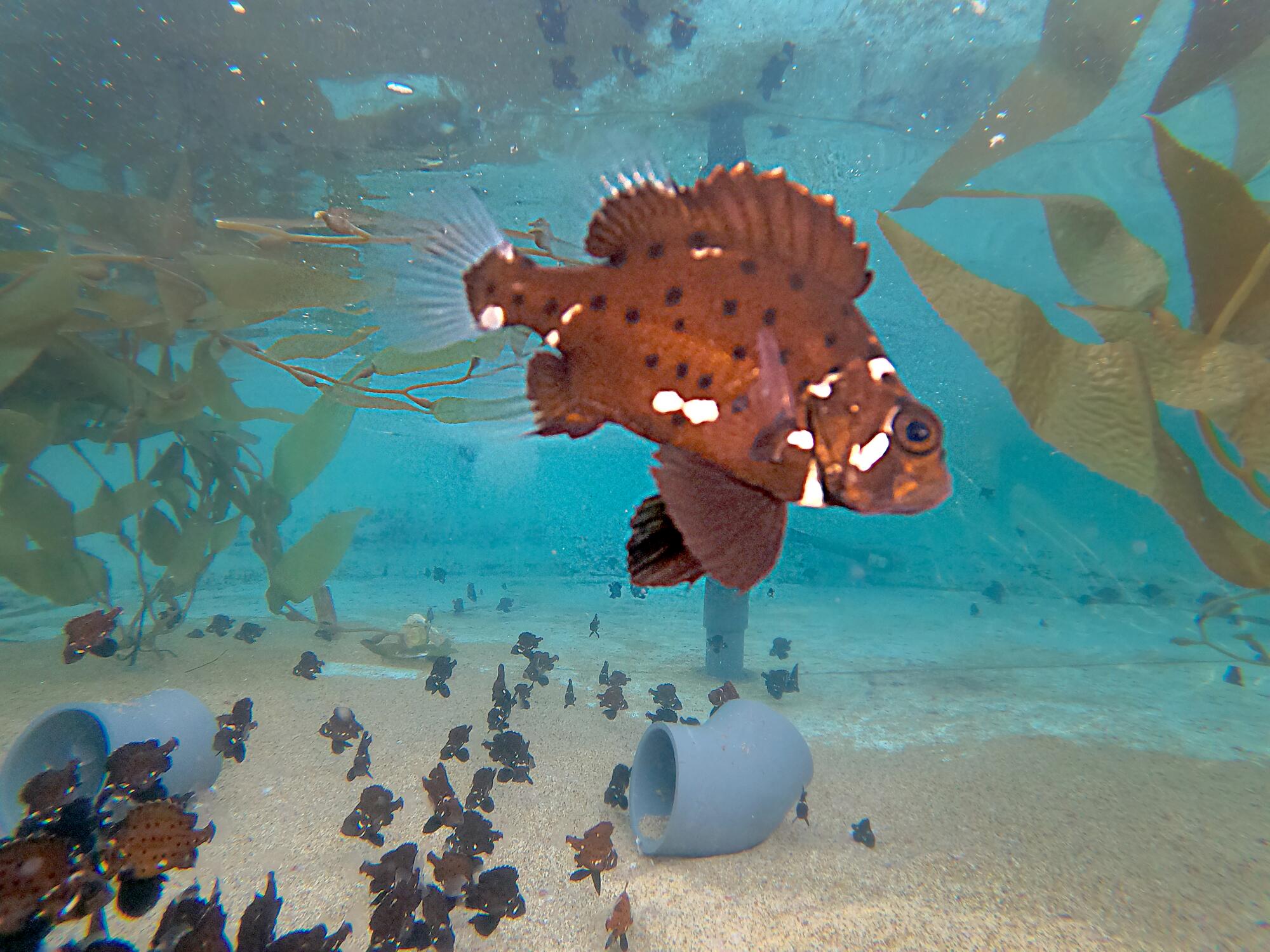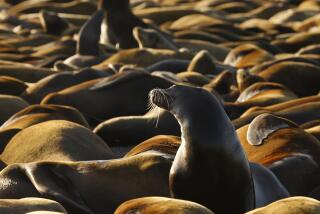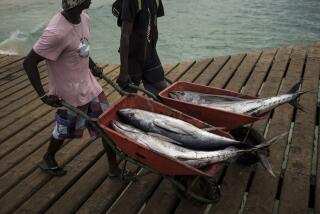A team of scuba-diving biologists on Wednesday released nearly 200 baby giant sea bass into the murky depths of Santa Monica Bay where the tiny, critically endangered fish could grow to be a quarter ton or more in size.
The captive-bred infants quickly adapted to their new home, a submarine canyon about 30 feet beneath the waves, where the currents are rich in nutrients and tiny shrimp, a favorite food for the bass.
The four-inch infants — adorned with orange, blue and gray colors — can reach 560 pounds, seven feet in length and live to be 75 years old.
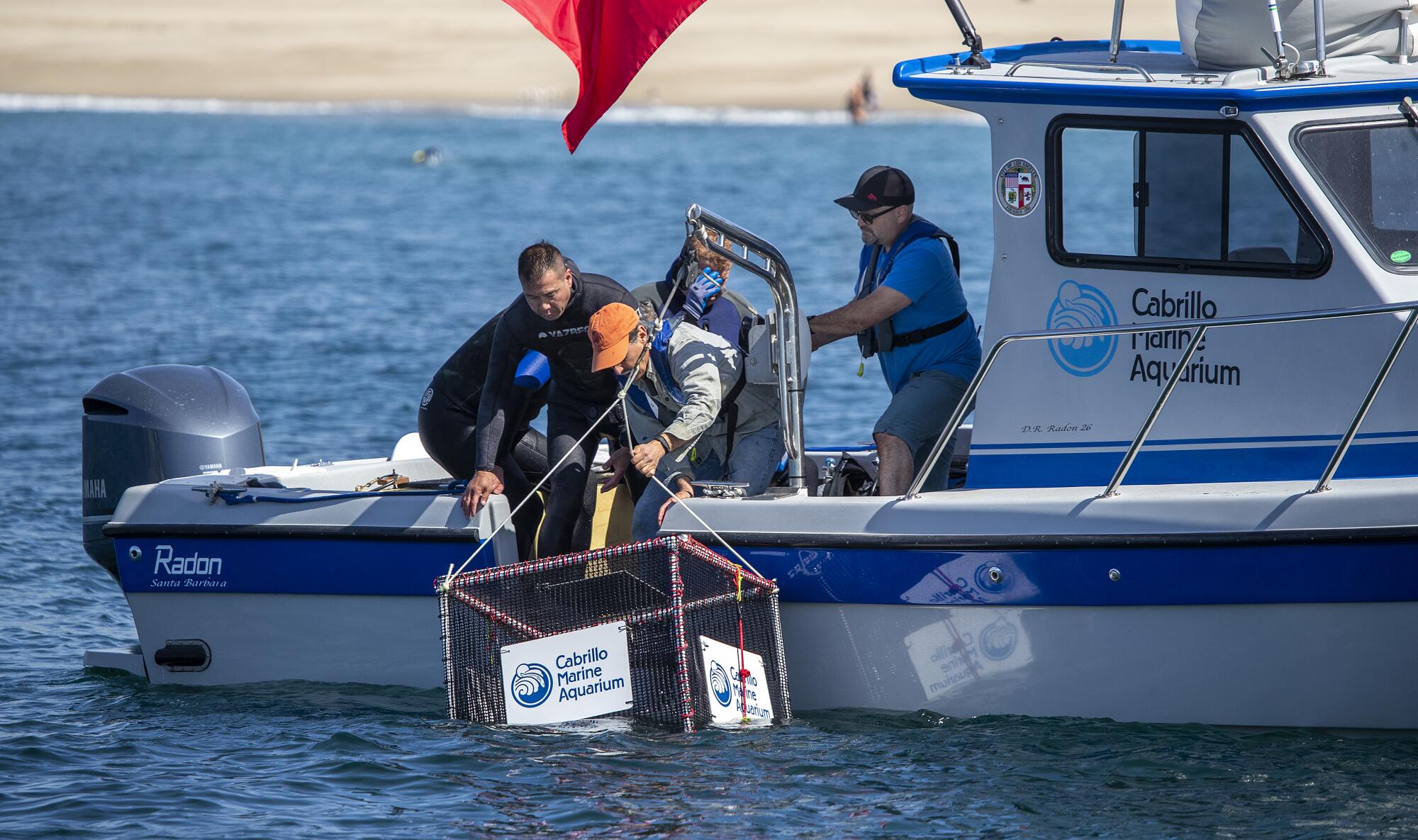
They are also as imperiled as black rhinos. Giant sea bass were among the most overfished species in the 1930s. Today, fewer than 500 breeding adults cruise Central and Southern California’s coastal waters, according to a recent genetic study.
“Total success!” Michael Couffer, a biologist and underwater photographer involved in the reintroduction effort, said with a smile immediately after he rose to the surface.
“They were behaving as though they had been raised in the wild instead of in captivity,” he said. “Some were chasing each other around. Others seemed to be getting ready to start looking for food.”
Among those expectantly observing the effort from the deck of a nearby boat was Crislyn McKerron, operations director of the Cabrillo Marine Aquarium. “We’re incredibly proud,” she said.
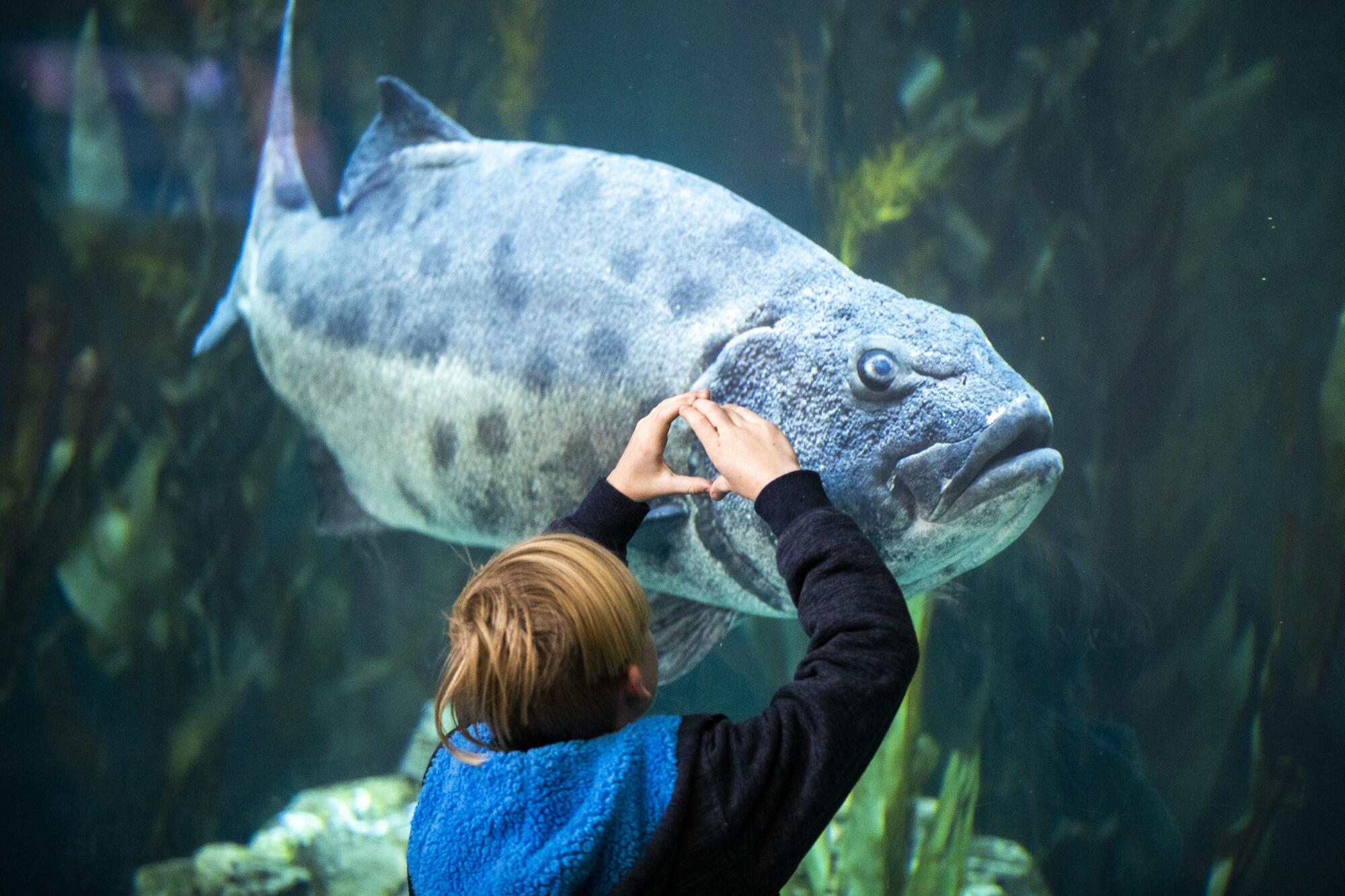
The unprecedented release of so many giant sea bass was the brainchild of Larry Allen, a professor of biology at Cal State University Northridge, who hopes they usher in a new generation of ancient mariners drifting between coastal kelp forests and deep blue waters hundreds of miles offshore.
Their very existence came by way of a biological surprise in Allen’s laboratory.
In May, an adult male and two adult female giant sea bass that were under study spawned an unintended bounty of thousands of eggs. Larvae hatched from those eggs went on to become several hundred pampered babies in carefully monitored tanks at the Cabrillo Marine Aquarium in San Pedro.
As the sun rose over this harbor town, four scuba divers with cameras and notepads finned toward canopies of undulating kelp.
Roughly 200 of the brood were later shared with the Aquarium of the Pacific in Long Beach.
In captivity, they feasted on a daily cocktail of squid, sardines, mackerel and clams — followed by dessert: shrimp.
“Shrimp is always served last because it’s like ice-cream to baby giant sea bass,” said Andres Carrillo of the Cabrillo Marine Aquarium. “They’re like little kids: If you offer giant seabass shrimp first, they won’t eat anything else.”
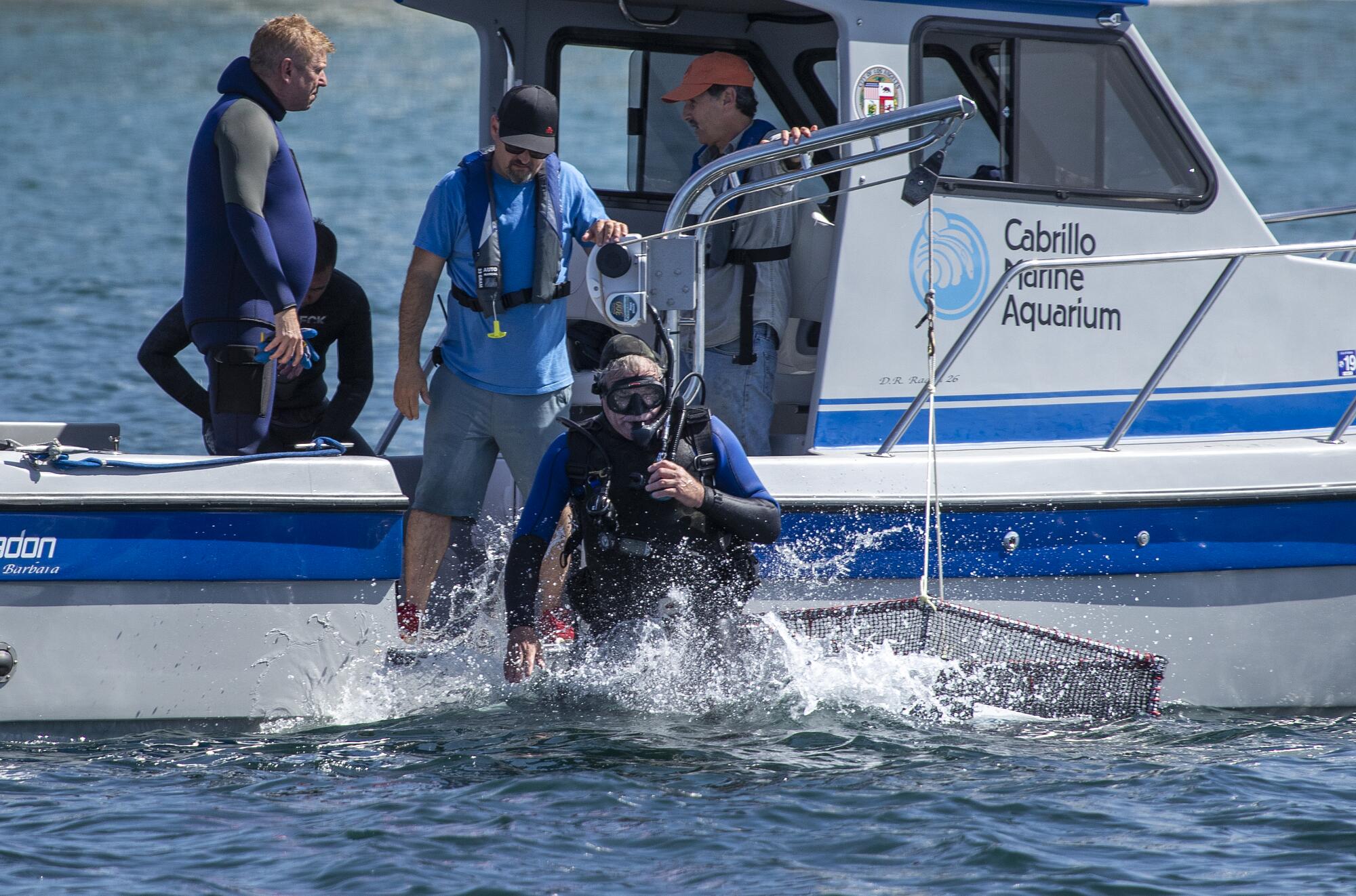
In collaboration with the California Department of Fish and Wildlife, Cal State Northridge and Cal State Long Beach, 180 baby giant sea bass reared at the San Pedro facility were released roughly 100 yards from the beach on Wednesday. Another 175 from the Long Beach aquarium are expected to be released next week.
Their parents, each weighing about 200 pounds, were tagged and then released into the ocean in October.
Aquarium officials asked that the exact locations not be made public to improve the fish’s odds of survival.
But with luck and stealth, the baby giants “will grow quickly,” said Nicole Leier, senior aquarist in charge of exhibits at the Aquarium of the Pacific, who was among a dozen staffers who assisted the effort Wednesday. “In 10 years, they’ll be up to about 100 pounds. In 15 years, they’ll reach maturity.”
In 2016, the Aquarium of the Pacific became the first public facility of its kind to spawn and raise a giant sea bass from larva to juvenile, providing a vital glimpse into the early life of the species.
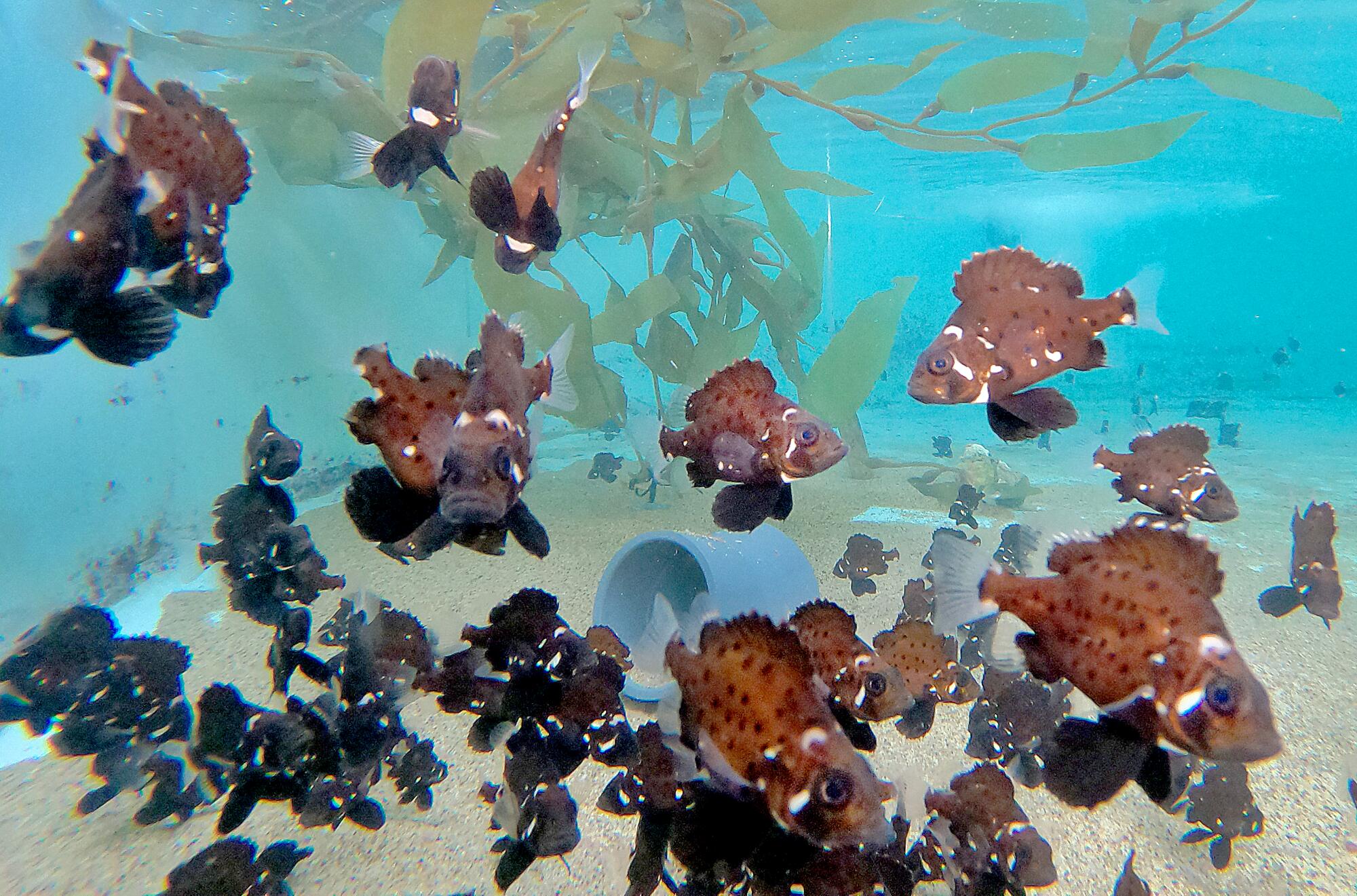
In the 1930s, full-grown giant sea bass caught by deep-sea charters attracted large crowds at local docks.
Calls for giant sea bass conservation grew in the 1990s, after hook-and-line fishery, divers armed with crossbows and commercial gill-netters had nearly wiped out them out.
The species is categorized as critically endangered by the International Union for Conservation and Nature.
Scientists say they need more and better data to recover the species, individuals of which carry unique spot patterns that can be read like a barcode.
In recent years, scuba divers from UC Santa Barbara and the Aquarium of the Pacific have been photographing giant sea bass near Santa Catalina Island’s city of Avalon.
The photos are archived in a Spotting Giant Sea Bass identification website that makes matches using pattern-recognition algorithms first developed by astrophysicists to spot patterns in star constellations.
Scientists say the bright colors of the juveniles blend in well with the undersea background, providing camouflage from predators large enough to consume them.
The color pattern will change as the fish age.
Climate change, however, remains a serious challenge to giant sea bass and all other marine species. Marine heat waves have doubled in frequency since 1982, and recent reports showed that global ocean temperatures in 2019 were the warmest on record.
“There aren’t many juveniles of this endangered species in the sea anymore,” Carrillo said, “so they’re facing an ocean of trouble on the road to adulthood.”
